A pallet manufacturing plant in the middle of West Texas somehow seemed like a strange thing to me, so I decided to find out how it came to be that L&L Pallet Supply, Inc. wound up in Muleshoe. General manager Travis Hall graciously agreed to answer all my questions and showed me how those pallets are made.
I didn’t realize L&L Pallets had been in Muleshoe that long, but Travis reminded me they had been at this location, formerly the Campbell-Bell carrot shed, for the last 15 years, but started out in Bovina 18 years ago. Looking for a larger location, owner Tom Landry moved to Muleshoe gaining some tax incentives along the way. I just visited this main plant where they repair old pallets and build new ones out of hardwood.
Later they also acquired the Robert Ruiz produce shed and the Cramer shed adding to their total production area. The Ruiz shed is used mostly for storage and is where most of the unusable pallets are chipped into mulch which is sold to the dairies to be used for calf bedding.
The Cramer unit builds custom pallets and pine pallets that are the standard size of 48 x 40 inches as well as custom pallets of varying sizes.
I guess it seemed strange to me to make pallets in an area devoid of a forest for lumber, but of course I had failed to consider that lumber can and is easily brought in for that purpose. Travis said oak, red oak, alder, and pine come in from Oregon, Montana, Canada, Arkansas, Oklahoma, and Missouri as well as Texas by rail and truck. The Oregon lumber comes by rail and is unloaded at Progress and Amarillo. He said the housing market tends to use pine, which makes hardwood sometimes cheaper than pine because the price of pine fluctuates based on the building business and the price of hardwood tends to remain constant. The main reason pallets became an industry here is because various companies in the area needed pallets, and Mr. Landry saw a need and filled it.
Hardwood pallets last for 50-100 uses, anywhere from five to fifteen years, but their life span really depends more on their uses and care, regardless of the wood they are made of. Some pallets are returned here and rebuilt, which I didn’t realize was part of the business. The decision on whether to buy new or used would depend on what the buyer intends to use the pallet for.
For example, an individual such as myself could bring in a damaged pallet which they would buy from me for as little as nothing or as much at $3. I would then buy another pallet appropriate for my needs, and they would repair the old one and resell it. I could buy another used one for anywhere from $5 to $8 or a new one for $12 to $15. The price is based on labor and the wood used. Used pallets are also brought in by companies to be repaired and sold, or if the wood is no longer usable, it is chipped into the mulch sold to dairies.The chipper has a magnet that pulls the nails out of the wood before it goes through the chipper.
This stack is A-grade repaired pallets,
whereas this less-polished stack is of B-grade pallets don’t look quite so perfect but are still perfectly usable.
Pallets can be made by hand or machine. This machine is putting together the pallets, flipping them as the air guns nail the parts together. Travis said women are certainly welcome to make them by hand, but flipping 30 to 50 pound pallets all day is a challenge for most women since, let’s face it, we aren’t always as strong as our male counterparts, so women usually run the machines. It takes about 45 seconds to make a pallet and send it on its way to the finished stack. The women can turn out anywhere from 546-630 pallets in a day.
Hand-built pallets can be finished in about a minute and a half, but the more experienced, skilled workers can do it in 30 seconds. I would have never thought it could be done that quickly.
The rebuild pallets aren’t always as fast, depending on how much wood has to be removed and replaced.
L&L has a work force of around 42 employees, and the pallet-builders are held accountable for their product. This is considered piece-work and L&L, like all pallet companies, has their own system for workers to mark their pallets. If the finished product does not meet the company standards, that worker is replaced. Pallet-building is considered skilled labor, and good pallet-builders make good money at their craft. L&L makes good on replacing defective pallets, so it is important that the product be up to standards. Not all companies, by the way, will stand behind their product like this.
Once the pallets are made, they go to the drying room where they are sprayed with a special solution to kill bugs and mold and then allowed to dry for four weeks.
After drying, they spend 35 minutes in the kiln for heat-treating at 140 degrees which also ensures no bugs are in pallets shipped out of the country, a requirement first instituted by Mexico but now standard procedure for pallets going to other countries as well.
Trucks were backed up to the loading docks waiting to be filled with orders going all over the United States as well as to international ports.
Mountains of finished pallets are stacked outside waiting for shipment.
Unusable wood is also chipped at this location.
Travis says that at this location they make about half new and half used pallets, depending on the time of the year and needs of the customers. They also do third-party orders from companies who supply pallets made here to other customers.
I mentioned all the DIY projects I had seen or heard about on Pinterest, and he smiled and said he gets someone in asking for pallets for one of those project about once a week. He also directed me to the new Bi-Wize store downtown where a decorative wall has been installed made of pieces of their pallets.
Considering that pallets are a widely used piece of equipment that look pretty simple and are pretty much taken for granted, I was very impressed with what it takes to make them and the many uses they serve. If you live in the country, or if you are a fan of Pinterest, I’ll just bet you have one or two in your possession.
Treat them well, and they will serve you well.
My thanks to Travis Hall for sharing the process with me and giving me the guided tour.
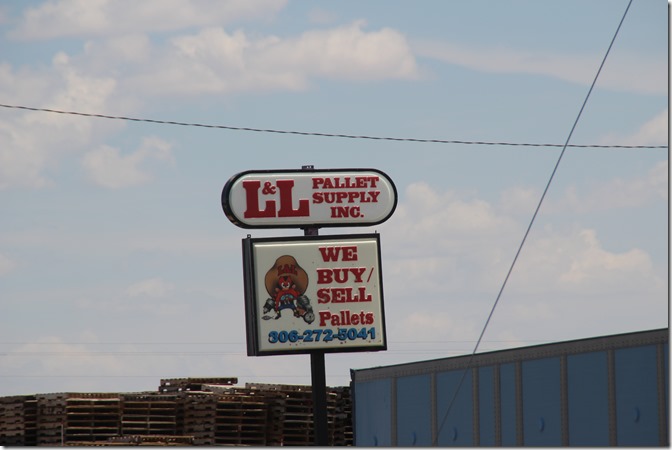
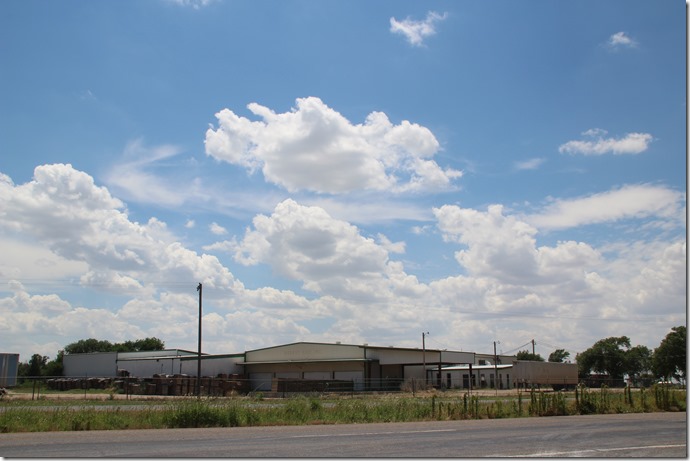
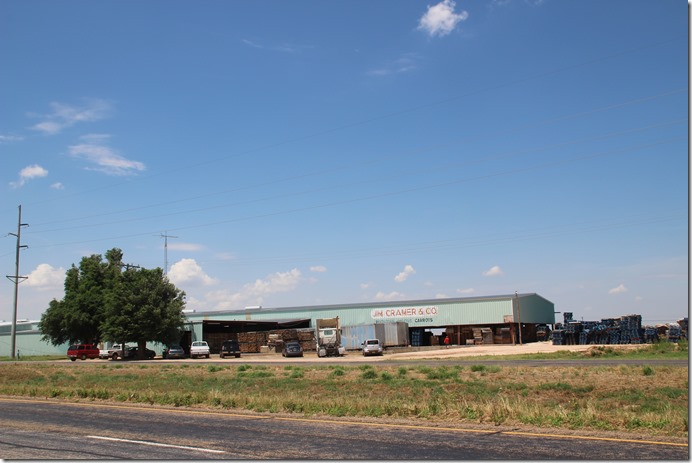
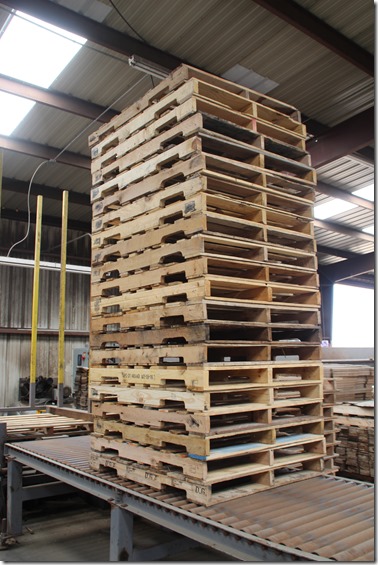
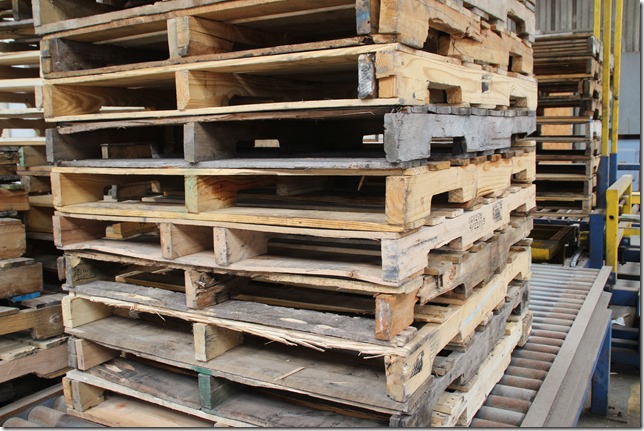
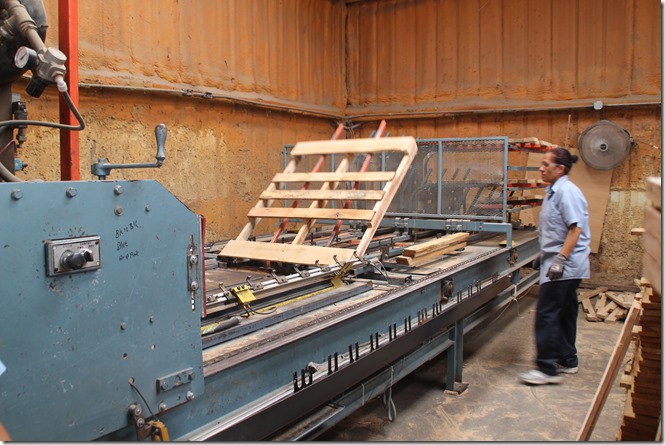
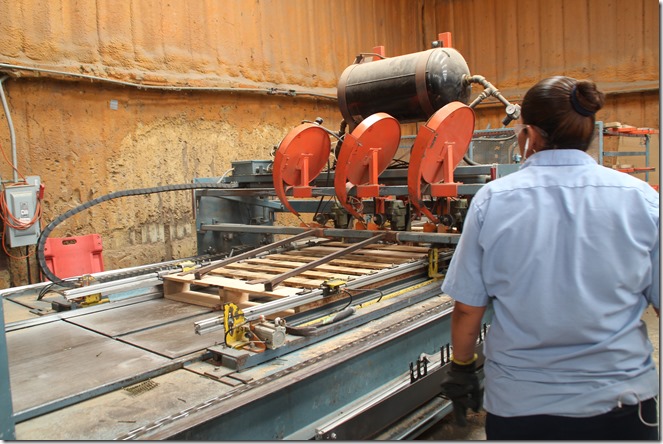
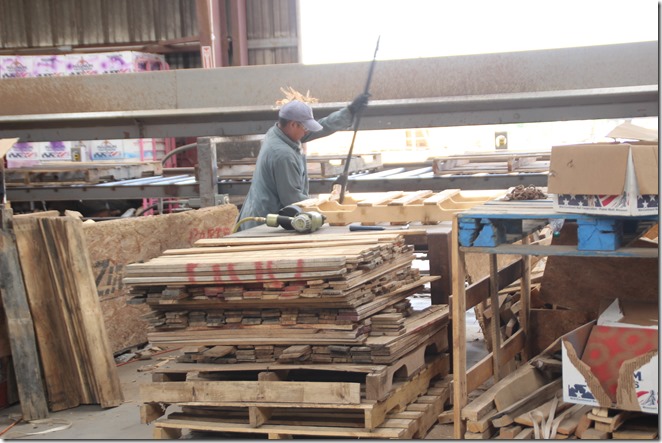
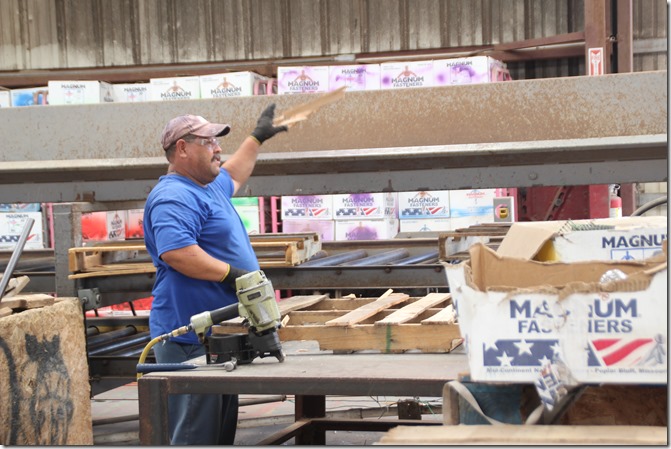
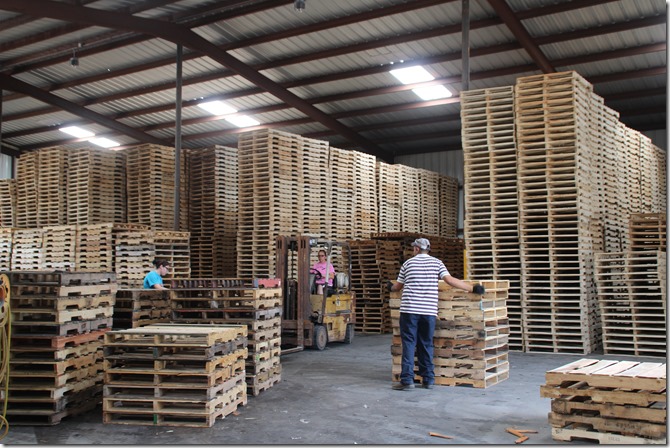
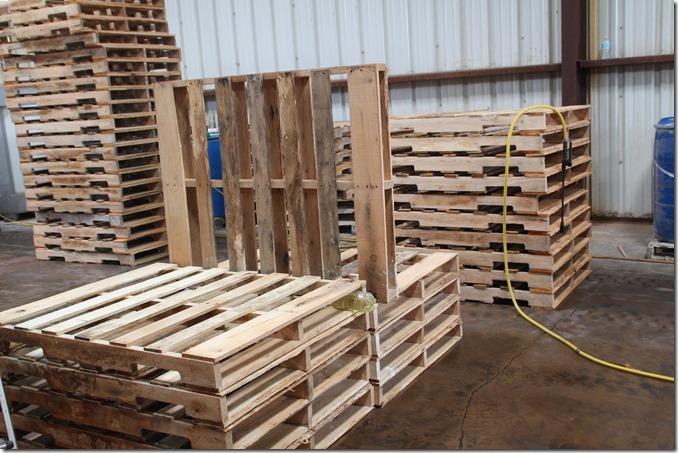
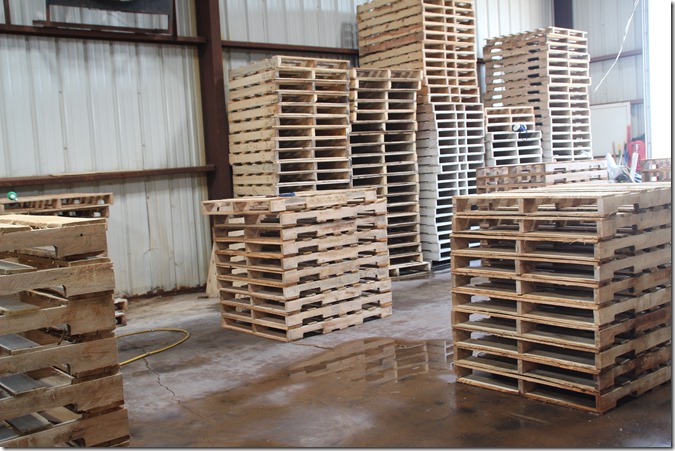
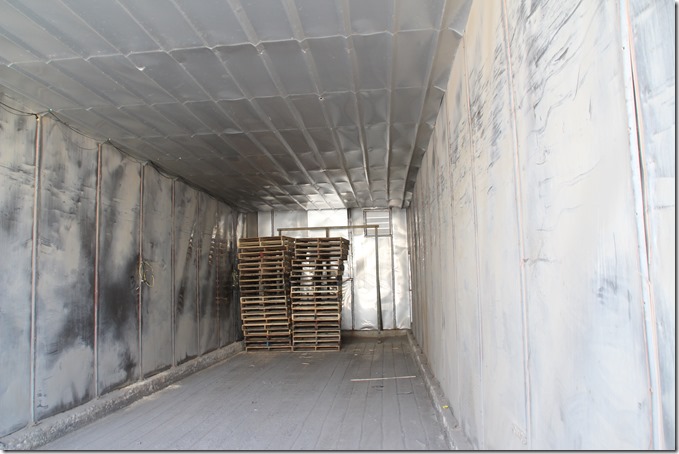
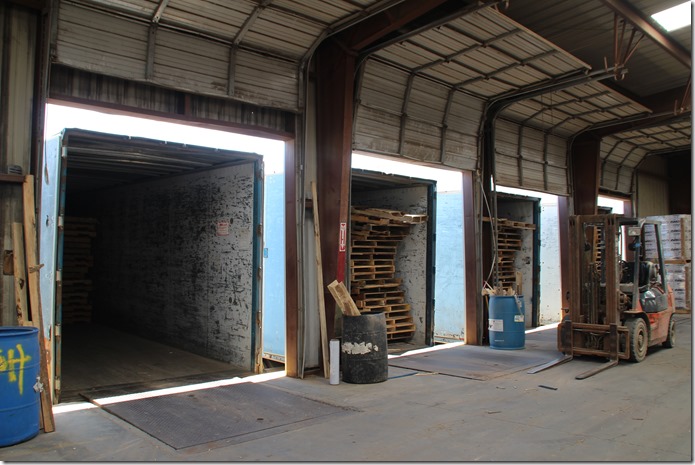
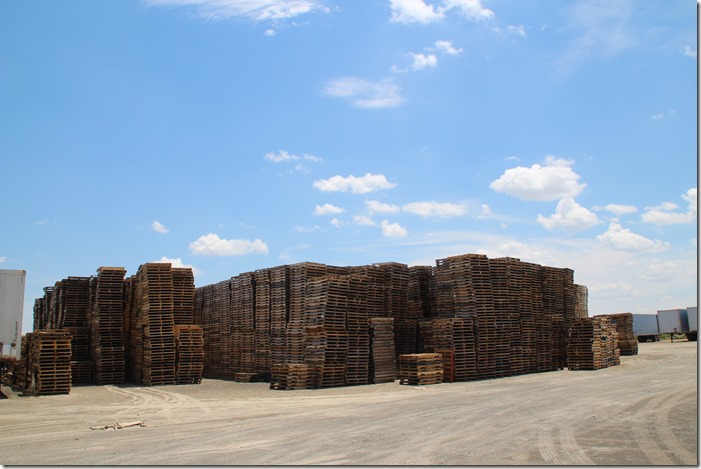
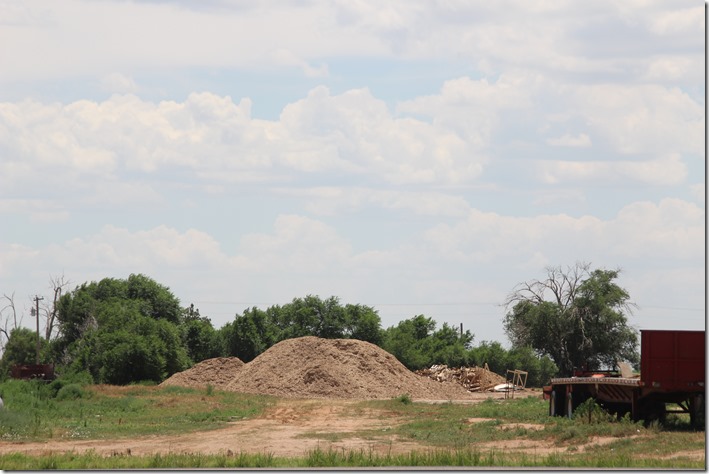
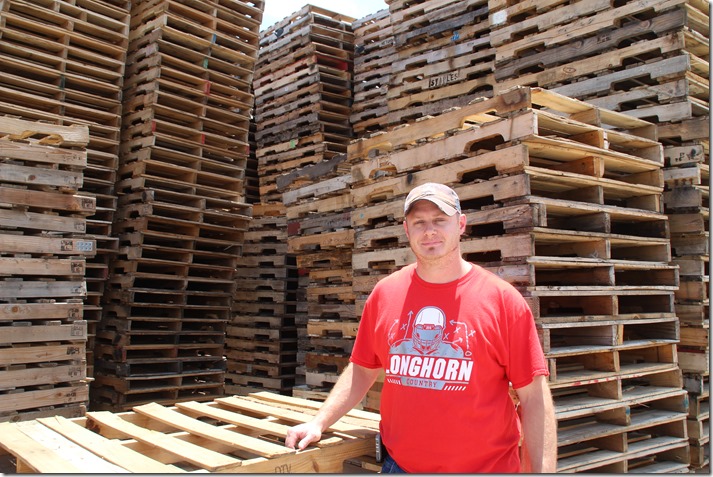
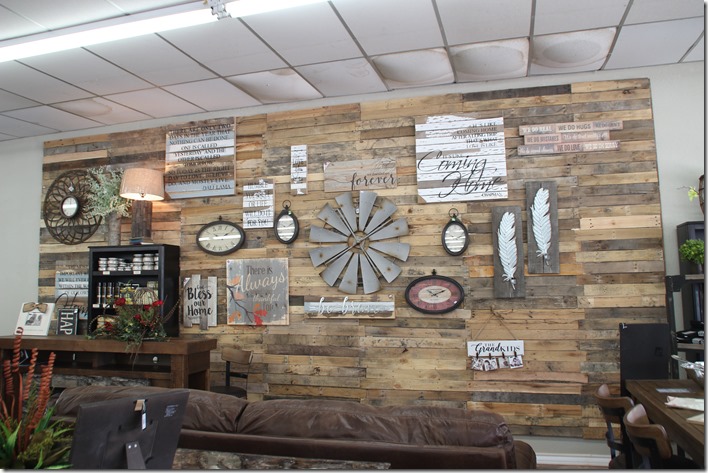
Recent Comments